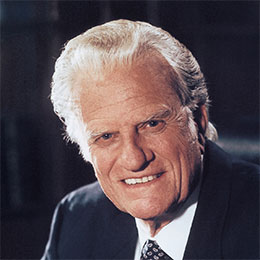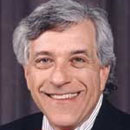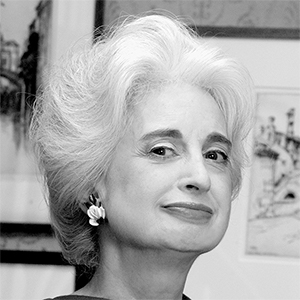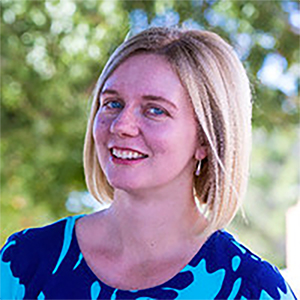Newberry Library discovers it holds the largest example in existence of an extremely rare paper type
Published in Lifestyles
CHICAGO -- The ancient manuscript rested on the shelves of the Newberry Library for more than a century.
Little was known about the bound book from colonial Mexico that had been donated to the library in 1911 by Edward Ayer, a collector and a tycoon who made his fortune supplying ties to railroad companies. It was called “Ayer 1485″ in the library’s catalog.
But then, two years ago, pages of the manuscript were projected onto the big screen at a Nahuatl conference at Harvard University where experts of the Aztec language had gathered, their first conference since the pandemic. It was like a family reunion, one attendee remembered.
At the podium was Ben Leeming, an independent scholar who studies Nahuatl writings used to evangelize Native peoples. While Leeming showed images of the manuscript — a collection of sermons by famed Franciscan missionary Bernardino de Sahagún — and discussed the significance of the words on its pages, Barbara Mundy became slightly preoccupied with the pages themselves.
“Of course I’m interested in the text, but what really, really drew my attention was the slides of different pages from this manuscript,” said Mundy, a Tulane University art history professor. “And I said, ‘Ben, could we zoom in on that paper?’ Because the manuscript, which was a big manuscript, was clearly done on a paper that was not European.”
Prompted by Mundy’s hunch, the Library of Congress analyzed the papers this fall and made an astounding discovery. The manuscript was printed on maguey paper, a type made from pounded agave plants that is so rare that only 10 sheets were known to exist: four at the Library of Congress and six at the National Library of Anthropology and History in Mexico City.
The Newberry’s Library’s manuscript is about 49 sheets long.
“When the results did come back, it was very exciting,” said Kim Nichols, the library’s director of conservation. “It’s always exciting … to see for whatever reason, that something ancient survives. There’s so many reasons why it’s lost.”
According to the library’s records, Ayer acquired the manuscript in 1886 from a London rare book dealer. Its first known owner was a Mexican collector and bibliophile, and at least two people owned the manuscript between the Mexican collector and the London dealer, records show.
The manuscript, titled “A Sequence of Sermons for Sundays and Saints’ Days” and written by Sahagún between 1540 and 1563, was among the roughly 17,000 items related to Native peoples that Ayer, a Newberry trustee, donated to the library.
Theories about its pages being made of maguey have existed since at least 2000, when a library staffer speculated it was such in a conservation report from November of that year. In a 2017 report, a staffer placed a question mark in parentheses next to a guess that it was maguey.
At first, Mundy believed the manuscript was made of another type of Native paper, amatl paper.
Leeming told her he thought the paper was amatl, she said. But he wasn’t sure. He hadn’t seen much Native paper. Few conference attendees had.
Only four amatl and no maguey manuscripts that are definitively pre-Hispanic have survived, according to Mundy. The surviving amatl manuscripts are from the Maya region, which is in the eastern half of Mesoamerica.
Most manuscripts from the earliest moments of contact between Europe and the Americas — known as colonial-era manuscripts — are made out of European paper.
The Florentine Codex — an encyclopedia of Aztec history and belief written by Sahagún, the main source of what is known about the Aztecs — was written on 2,400 pages of paper imported to Mexico from Italy.
All surviving maguey manuscripts, including Sahagún’s sermons, are colonial-era manuscripts. Sometime after the arrival of Europeans, maguey papermaking stopped and the technology went extinct, according to an International Council of Museums publication.
Amatl paper, which is made from the inner bark of fig trees, was more common than maguey paper, which is made from the same plant as tequila. Amatl paper is still being produced today.
There are hundreds of surviving colonial-era amatl manuscripts, but most are a single sheet long. In a Newberry article from 2022, when Mundy thought Sahagún’s sermons were written on amatl, she wrote that 49 sheets, or “196 pages is a lot of amatl paper, perhaps the largest collation of amatl paper to exist today.”
After the Nahuatl conference, Mundy returned to Washington, D.C., where she had a fellowship at the Library of Congress. She told Mary Elizabeth Haude, a Library of Congress paper conservator, about what she saw during the conference.
During the summer of 2022, the pair visited the Newberry to see Sahagún’s sermons.
Haude said that during the visit, she didn’t think the manuscript was made of amatl because of her familiarity with the Huexotzinco Codex — the Library of Congress’ maguey manuscript, which is made of four sheets of maguey and four sheets of amatl.
“I have also been to Mexico and looked at their manuscripts on maguey,” Haude said. “As a conservator, I really have an eye for materials. But that being said, I couldn’t definitively say it was one paper or another until we did fiber analysis.”
Nichols began working at the library in late 2022, and a bit of time passed before she was up to speed on the inquiry into Sahagún’s sermons.
This fall, Nichols got out Sahagún’s sermons and put drops of deionized water on the manuscript in several spots to make the fibers there more malleable. While using a microscope, she extracted some of those fibers with tweezers.
“Under the microscope it looks like a chunk, but when you drop it into a little plastic vial with a snap lid, it looked like it just disappeared into the void,” Nichols said.
She sent several vials to the Library of Congress and Haude, who removed the fibers from the vials, mounted them on microscope slides and peered at the slides.
“Maguey tends to have this stray fiber — spiral thickenings, I think, is what they’re called. And when they become undone, they make this zigzag pattern, and it’s very, very specific,” Haude said. “So we saw that right away.”
‘It wasn’t just that the paper was rare’
Maguey — a Spanish word for agave plants — has been used to make everyday items like baskets in Mesoamerica since prehistoric times, according to the International Council of Museums publication. It has been used in rituals, and Aztec religion included a goddess of maguey.
The four Library of Congress maguey sheets and five of the six maguey sheets in Mexico City are pictorial, meaning they’re drawings, according to Haude. Some of the Mexico City sheets are genealogies, while the Library of Congress sheets served as testimony in a legal case.
In the Harvard classroom, Mundy was transfixed by Sahagún’s sermons because of the important role of paper in rituals of Native Mesoamerican peoples, she said.
It was used to absorb blood and then burnt in honor of the gods. It was used to make deity costumes.
Mundy was “astounded” that paper that was “religiously charged” in the eyes of Native people was dragged into the new Christian world, she said.
“It was a Christian manuscript on Native paper, which carried all of this pre-Hispanic religious significance,” Mundy said. “That’s what really caught my attention. It wasn’t just that the paper was rare.”
Sahagún arrived in Mexico in 1529, about a decade after the Spanish conquest of the Aztec Empire led by conquistador Hernán Cortés.
Sahagún believed that better understanding of Native peoples’ “beliefs and practices would improve efforts to convert them to Christianity,” according to the Library of Congress.
In the Newberry article, Mundy wrote that while Sahagún worked with Native peoples, he was surrounded by Nahuatl-speaking intellectuals who embraced Christianity, taught Sahagún Nahautl and helped translate Christianity for Native audiences.
Because every other surviving Sahagún manuscript was made of European paper, it’s likely that using maguey paper for the sermons was a choice of Sahagún’s Native collaborators, Leeming said.
“The paper may have not been Sahagún’s election, but that of his Native collaborators, who saw fit to set Christian sermons down on the substrate that they regarded most highly,” Mundy wrote in the Newberry article.
Leeming, who recently produced an English translation of the sermons, said the recent revelation about the manuscript can help correct a lopsided narrative concerning the earliest moments of contact between Europe and the Americas.
“This discovery helps balance a historical narrative that has long focused on the role of Spanish friars like Sahagún,” Leeming wrote in an email to the Tribune, “and has relegated the Native people who assisted him to the shadows.”
©2025 Chicago Tribune. Visit at chicagotribune.com. Distributed by Tribune Content Agency, LLC.

































Comments